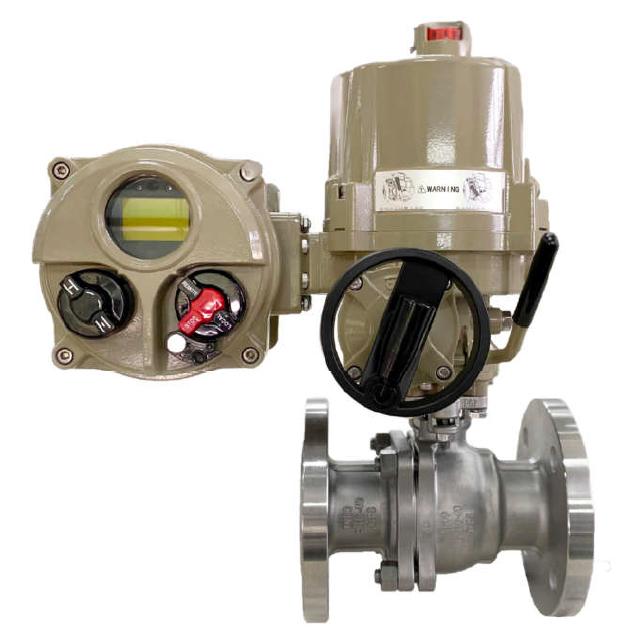Electric actuated ball valves play a critical role in industrial systems, combining precision and automation for efficient flow control. This blog outlines the basics of how these valves work, detailing their components and the role of the electric actuator. It also explores their versatility across industries like oil and gas, manufacturing, and HVAC. Discover the benefits and reliability of electric actuated ball valves and learn how they optimize operations in demanding environments.
Introduction
Electric ball valves are vital in industrial systems, delivering precision and automation for seamless fluid control. By integrating an electric actuated ball valve with a robust ball mechanism, these devices enhance efficiency and reliability in demanding environments. Explore this article to uncover how these innovative valves operate and their wide-ranging applications across industries.
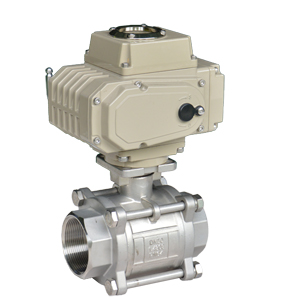
1. Understanding the Basics of the Electric Ball Valve
Definition of an electric ball valve.
An electric ball valve is a highly efficient flow control device used in industrial systems to manage the movement of fluids or gases. It comprises a spherical ball with a bore through the center, a housing unit, and an electric actuator. The actuator is the driving mechanism that automates the valve’s operation, enabling precise control over the opening and closing of the ball’s bore. This automation eliminates the need for manual intervention, providing quick and accurate adjustments. The electric ball valve is prized for its reliability, compact design, and ability to operate in demanding environments, making it an essential component in applications that require consistent flow regulation.
Comparison of traditional ball valves versus electric actuated ball valves.
Traditional ball valves and electric actuated ball valves serve the same fundamental purpose of controlling fluid or gas flow but differ dramatically in operation, efficiency, and capabilities. Traditional ball valves require manual effort to open or close, limiting their efficiency in complex, high-demand systems. Electric actuated ball valves, on the other hand, integrate an electric actuator into the design, enabling automated operation and precise control. This automation reduces the need for hands-on involvement, enhances response time, and ensures consistent performance under varying pressures and conditions. Electric actuated ball valves are ideal for applications requiring remote operation and tight flow regulation, making them superior in industries like oil and gas, chemical processing, and HVAC where accuracy and reliability are critical.
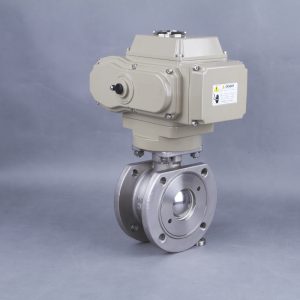
Advantages of utilizing electric ball valves (e.g., automation, precision, and energy efficiency).
Electric ball valves offer numerous advantages that make them indispensable in modern industrial systems. One key benefit is automation, as the integration of an electric actuator enables seamless remote operation, eliminating the need for manual adjustments and improving efficiency. These valves also deliver exceptional precision, allowing for tight control of fluid or gas flow, which is critical in applications requiring accurate performance under varying conditions. Additionally, electric ball valves are designed with energy efficiency in mind, consuming minimal power during operation while maintaining consistent functionality. Together, these features enhance operational reliability, reduce downtime, and optimize the overall performance of demanding systems in industries such as oil and gas, chemical processing, and water treatment.
2. Key Components of an Electric Ball Valve
Description of primary parts:
Ball valve
At the heart of an electric ball valve lies the ball valve mechanism, a fundamental component responsible for regulating fluid or gas flow. This component consists of a hollow, perforated spherical ball seated within the valve housing. By rotating the ball, the electric actuator aligns or misaligns the opening in the ball with the valve ports, effectively opening or closing the flow path. Its design ensures a full-bore opening when positioned correctly, minimizing pressure drops and allowing efficient flow. This precision and reliability make the ball valve an integral part of the electric ball valve system, ensuring seamless and consistent performance across a wide array of industrial applications.
Electric actuator
The electric actuator is a vital component of an electric ball valve, responsible for automating its operation and enhancing system precision and efficiency. This device converts electrical energy into mechanical motion, enabling the seamless rotation of the ball within the valve to regulate fluid or gas flow. By eliminating the need for manual intervention, the electric actuator ensures consistent performance, faster response times, and improved control in demanding industrial environments. Its precision allows for accurate adjustments to flow rates, even under varying pressure conditions, while its automation reduces labor requirements and the potential for human error. These attributes make the electric actuator an indispensable element in modern industrial systems, driving efficiency and reliability in applications such as oil and gas, chemical processing, and water treatment.
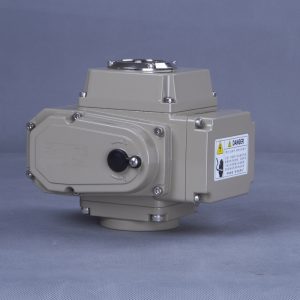
Interface between the ball valve and electric actuator
The interface between the ball valve and electric actuator is a critical connection that enables precise and automated fluid flow control in industrial systems. This interface typically consists of a mounting bracket and a drive mechanism, ensuring the secure alignment and seamless transfer of motion from the actuator to the ball within the valve. When the electric actuator receives an electrical signal, it rotates the ball via the interface, opening or closing the flow path with exceptional accuracy. This design eliminates the need for manual adjustments, enhances reliability, and allows for real-time responsiveness to changing system demands. The robust and carefully engineered interface between the ball valve and electric actuator ensures consistent performance, making it essential for high-precision applications in industries such as oil and gas, chemical processing, and water management.
Role of the electric ball valve actuator in motion control.
The electric ball valve actuator plays a pivotal role in motion control by enabling precise and efficient regulation of fluid flow within industrial systems. By converting electrical signals into mechanical motion, it seamlessly operates the rotation of the ball valve, ensuring fluid pathways are opened or closed with exceptional accuracy. This level of automation reduces manual intervention, increases system responsiveness, and allows for real-time adjustments to dynamic process conditions. The electric ball valve actuator enhances accuracy and consistency, minimizing inefficiencies and potential errors caused by human operation. Its contribution to streamlined control and reliability positions it as a core element in modern industrial applications such as chemical processing, water treatment, and oil and gas systems.
Discussion of common materials used in electric actuated ball valves for durability and performance under varying conditions.
Electric actuated ball valves are constructed using a range of materials designed to enhance durability and optimize performance across diverse operating conditions. Stainless steel is widely used for its exceptional resistance to corrosion and ability to withstand high pressures and temperatures, making it ideal for demanding industries like oil and gas or chemical processing. Brass offers excellent mechanical properties and corrosion resistance, performing well in moderate-pressure systems and offering a cost-effective solution for water and air applications. PVC, valued for its lightweight nature and chemical resistance, is suitable for non-aggressive environments like water treatment and agricultural irrigation. The selected material directly influences the valve’s longevity and operational reliability, ensuring electric actuated ball valves can handle specific industrial challenges with precision and efficiency.
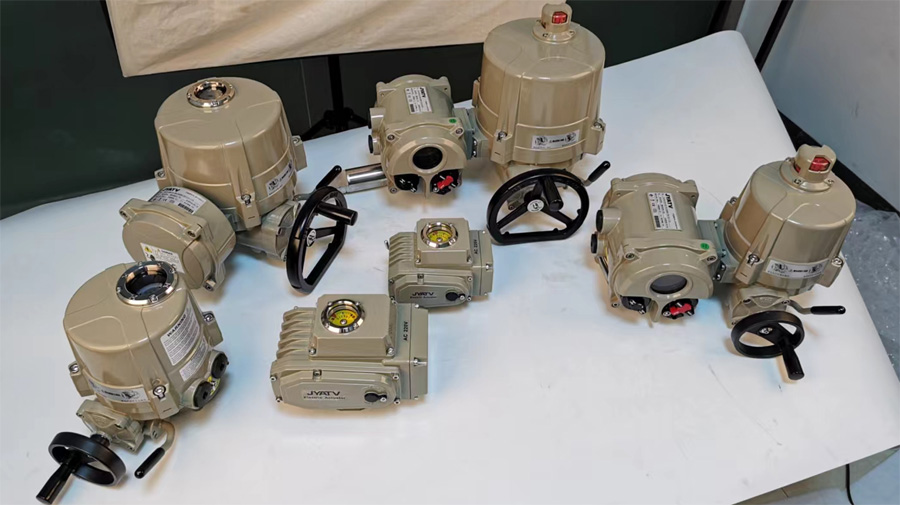
3. How Does an Electric Ball Valve Operate?
Step-by-step explanation of the actuation process:
Signal reception by the actuator.
Signal reception by the actuator in an electric ball valve system is a critical process that ensures precise control of the valve’s position. The actuator receives electrical signals from a control system, which can range from simple on/off commands to complex variable inputs, depending on the system’s requirements. These signals trigger the actuator’s internal mechanisms, converting the electrical input into mechanical motion to either rotate or stabilize the valve. This responsive signal processing allows for highly accurate adjustments, ensuring optimal fluid flow and system efficiency. Accurate signal reception by the actuator is vital for maintaining the integrity and responsiveness of automated industrial processes, minimizing errors and enhancing overall performance in applications such as chemical processing, water management, and oil and gas systems.
Actuator-driven rotation of the ball within the valve.
The actuator-driven rotation of the ball within an electric ball valve is a streamlined process that ensures precise control of fluid flow across industrial systems. The actuator translates electrical signals into mechanical motion, which in turn rotates the spherical ball inside the valve. Depending on the position of the ball’s bore—aligned for flow or perpendicular to block—it regulates the fluid’s movement with exceptional accuracy. This seamless rotation eliminates the need for manual intervention and enhances system efficiency by ensuring rapid, consistent adjustments to changing conditions. The actuator-driven rotation provides the reliability and precision necessary for demanding applications, such as chemical processing, water treatment, and oil and gas operations, where maintaining optimal flow control is paramount.
Opening or closing the flow as a result of ball movement.
The ball movement within an electric ball valve directly controls the opening or closing of fluid flow. The spherical ball features a central bore that either aligns with the fluid passage to allow flow or rotates perpendicular to it, creating a solid barrier that halts movement. This mechanism enables precise and reliable flow control with minimal leakage. The ball movement, driven by the electric actuator, allows for rapid changes in valve position, essential for maintaining efficiency in industrial systems. This function is critical in applications like chemical processing, water treatment, and energy production, where accurate flow regulation ensures optimal performance and safety.
Role of ball valve electric actuators in achieving precise control.
Ball valve electric actuators are essential for achieving precise control of fluid flow in industrial systems, where accuracy and responsiveness are paramount. These actuators convert electrical signals into precise mechanical motion, allowing for meticulous adjustments to the ball’s position within the valve. This capability ensures exact flow rates, minimizing waste and maintaining system efficiency. Their precision is particularly critical in applications like chemical processing, where maintaining specific flow conditions is vital for reaction stability, and in water management systems, where accurate distribution is necessary to avoid resource loss. By providing reliable and responsive control, ball valve electric actuators play a key role in optimizing performance and ensuring consistency in complex industrial operations.
Influence of voltage, torque, and speed on the system’s mechanical performance.
The mechanical performance of electric ball valve systems is heavily influenced by voltage, torque, and speed, as these factors collectively determine the system’s efficiency and reliability. Voltage provides the necessary power for the actuator, with fluctuations potentially causing inconsistent operation or diminished responsiveness. Torque is critical for overcoming resistance during ball rotation, ensuring that valves can handle varying pressure loads without mechanical failure. Speed, on the other hand, dictates the time it takes for the valve to open or close, directly impacting the system’s ability to respond to changing flow requirements. Balancing voltage, torque, and speed is essential to optimize performance in demanding industrial applications, such as chemical processing and energy systems, where precise and reliable operation is crucial for maintaining process integrity.
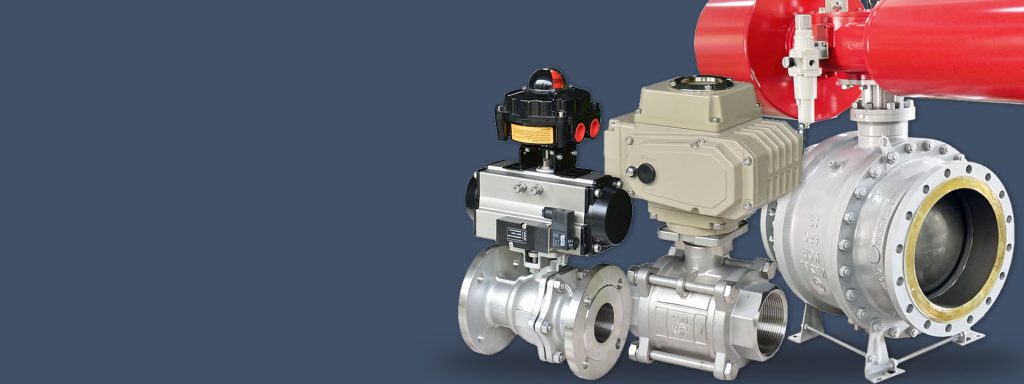
4. Maintenance and Troubleshooting of Electric Actuated Ball Valves
Common maintenance practices to enhance the lifespan of electric ball valves.
Regular maintenance practices are vital for enhancing the lifespan of electric ball valves and ensuring their optimal performance. Routine inspections help identify signs of wear, corrosion, or damage, addressing issues before they escalate. Cleaning the valve components, especially the ball and sealing surfaces, prevents the buildup of debris that could hinder operation. Proper lubrication of moving parts minimizes friction, reducing unnecessary wear during actuation. Additionally, periodic calibration of the actuator ensures precise alignment and accurate positioning, maintaining system efficiency. Implementing these maintenance practices not only prevents premature failure but also extends the overall service life of the valve, making it a reliable component in demanding industrial applications.
Identifying and solving issues with electric ball valve actuators.
Identifying and solving issues with electric ball valve actuators is critical for maintaining system reliability and minimizing downtime. Common problems include electrical failures, which might result from faulty wiring or power disruptions, mechanical jams caused by debris or worn components, and calibration errors that lead to misalignment or inaccurate operation. Troubleshooting these issues begins with inspecting electrical connections to ensure stable power supply and replacing damaged wiring if necessary. Check for physical obstructions or wear within the actuator and valve assembly. This can resolve mechanical jams. Recalibrating the actuator aligns its settings for precise control. Timely intervention is essential to address these challenges. This prevents prolonged disruptions. It ensures electric ball valve actuators deliver consistent performance. This is crucial in industrial systems.
Importance of regular inspections and adherence to manufacturer guidelines.
Regular inspections and adherence to manufacturer guidelines are essential for ensuring the safety, reliability, and longevity of electric ball valves. Inspections allow operators to detect early signs of wear, corrosion, or potential malfunctions, enabling timely intervention to prevent costly failures. By following manufacturer guidelines, users ensure that maintenance and operation are aligned with the valve’s design specifications, optimizing performance and reducing the risk of damage. These guidelines often include detailed instructions for lubrication, calibration, and component replacement, which are crucial for maintaining system efficiency. Together, regular inspections and strict adherence to manufacturer recommendations create a proactive approach to managing electric ball valves, guaranteeing dependable operation in demanding industrial environments.
5. Choosing the Right Electric Ball Valve for Your Needs
Factors to consider, such as material compatibility, pressure ratings, and environmental conditions.
When selecting electric ball valves, consider material compatibility, pressure ratings, and environmental conditions. This ensures optimal performance and reliability. Material compatibility must match the fluid being handled. This prevents issues like corrosion, erosion, or chemical reactions. Such issues could compromise the valve’s durability. Pressure ratings are equally important. The valve must withstand the system’s maximum operating pressure. This prevents the risk of failure. Environmental conditions also impact the valve’s operation. These include temperature fluctuations, humidity levels, and particulates. Selecting a valve that meets these criteria is crucial. It ensures efficient function and resilience under challenging conditions. This provides long-term value in demanding industrial applications.
How certification and quality control play a role in selection.
Certification and quality control are crucial in selecting electric ball valves. They ensure compliance with stringent industry standards. Regulatory requirements are also met through these processes. Certifications like ISO or API validate the valves’ safety and reliability. They confirm performance in demanding industrial applications. Robust quality control includes meticulous testing and inspection. This ensures each valve maintains consistent functionality and durability. These practices guarantee performance and build customer trust. They assure the product adheres to the highest standards. Prioritizing certification and quality control mitigates risks. It enhances operational safety and underscores a commitment to superior solutions.
Importance of working with experienced manufacturers for tailored solutions.
Collaborating with experienced manufacturers is crucial for obtaining tailored solutions that address the specific demands of electric ball valve applications. These manufacturers have deep expertise in design and material selection. They excel in advanced technology integration. This enables them to develop customized solutions. These solutions align with unique operational requirements. They can adapt valve specifications to diverse conditions. This includes system pressures and fluid characteristics. This ensures optimal performance and durability. Partnering with seasoned professionals offers many benefits. Businesses gain access to innovative engineering and enhanced reliability. They also achieve efficient operation. This partnership ultimately drives better outcomes and long-term value. Relying on experienced manufacturers for tailored solutions underscores a commitment to quality and precision in industrial systems.
FAQS
1. What is the warranty period for electric ball valves?
The warranty period for electric ball valves typically ranges between 12 to 24 months, depending on the manufacturer and product specifications. Be sure to review the warranty terms provided with the specific product for detailed coverage and conditions.
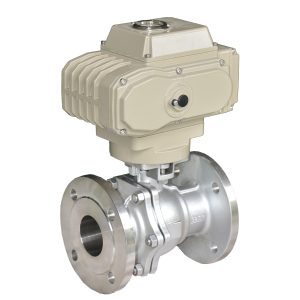
2. How long is the delivery time for an electric ball valve?
Delivery times vary based on the order size, customization requirements, and the manufacturer’s location. Standard electric ball valves are often shipped within 1 to 2 weeks, while tailored or large volume orders might take 4 to 6 weeks. Contact the supplier directly for an accurate estimate.
3. How are electric ball valves packed for shipment?
Electric ball valves are securely packed to ensure they arrive in pristine condition. Packing typically includes sturdy corrugated boxes, foam lining to protect the ball valve electric actuators and other components, and moisture-resistant wrapping to guard against environmental exposure during transit.
4. What are the common applications for electric ball valves?
Electric ball valves are widely used in industries such as oil and gas, water treatment, chemical processing, and HVAC systems. Their precise control comes from electric actuated ball valves and electric ball valve actuators. This makes them ideal for managing flow in high-pressure environments. They are also perfect for automated systems.
5. Can electric ball valves be customized for specific applications?
Yes, electric actuated ball valves can be tailored to meet specific operational needs. Options include material selection, size adjustments, and special configurations for handling unique fluids or environmental conditions. Working with experienced manufacturers ensures the best solutions for your application.
Conclusion
Understanding how an electric ball valve operates highlights its pivotal role in driving efficiency and automation across industrial systems. These valves, equipped with electric actuated ball valves and ball valve electric actuators, offer precise control, seamless operation, and reliability in demanding applications. Electric ball valve actuators ensure accurate flow regulation, making them ideal for processes that require consistent performance and automation. From their core functionality to their adaptability in various environments, electric ball valves and electric actuated ball valves have become essential tools for modern industries. By incorporating these advanced components, businesses can optimize operations, reduce downtime, and achieve long-term efficiency. If you’re looking to enhance system performance, electric ball valves are a dependable choice worth considering.

